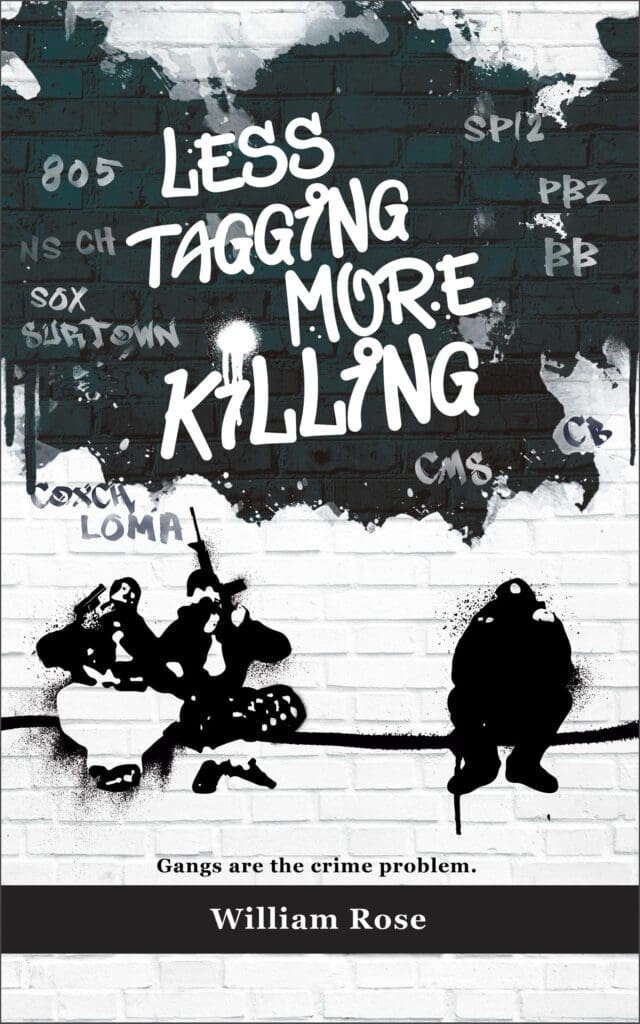Northside vs Southside Gangs in Oxnard: History and Violence
October 3, 2025
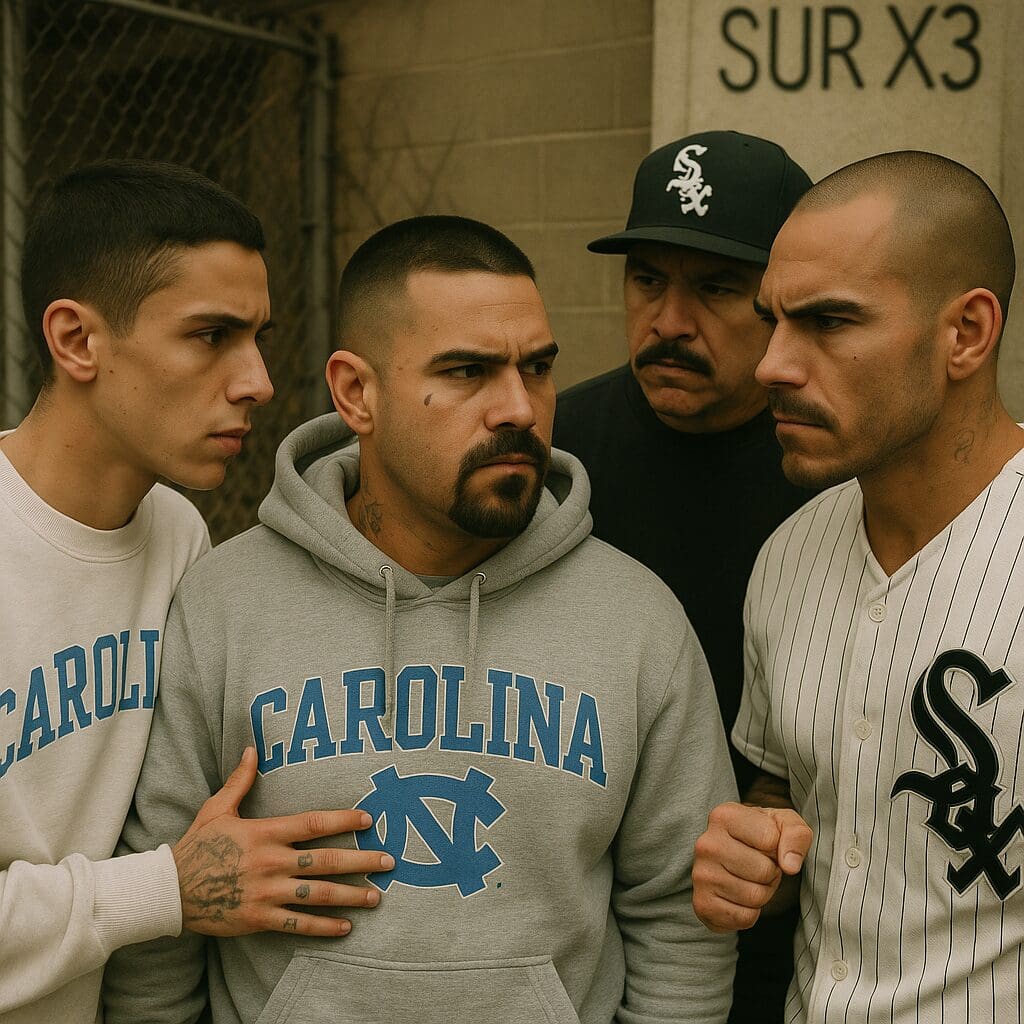
Northside vs Southside gangs in Oxnard, California, with a population just over 200,000, is home to seven Mexican/American gangs that have carved out their identities, territories, and rivalries across its neighborhoods. These seven gangs, from largest to smallest, are: Colonia Chiques, Southside Chiques, Lemonwood Chiques, Surtown Chiques, Northside Chiques, Loma Flats Chiques, and Squires Drive Chiques. Together, they account for more than 1,100 documented members. To learn more read the blog Hispanic Gangs: Inside The Dirty Nickel.
To put that in perspective, the Oxnard Police Department at one point had just six detectives dedicated to violent crime and gang suppression—meaning they were outnumbered by gang members at a ratio of more than 184 to 1. It was not a fair fight.
Within this crowded gang landscape, two names repeatedly rise to the surface: Southside Chiques and Northside Chiques. Their histories, criminal activity, and violent conflicts define much of the narrative around Oxnard’s gang problem. To learn more about Oxnard gangs read the blog Oxnard Colonia Chiques: History and Violence.
Southside Chiques: Territory
Their territory is extensive: the south side of Oxnard, east of J Street, south of Pleasant Valley Road, west of Saviers Road, and north of Hueneme Road. Their presence in these neighborhoods is unmistakable, from graffiti scrawled on walls to groups of gang members flashing signs on street corners.
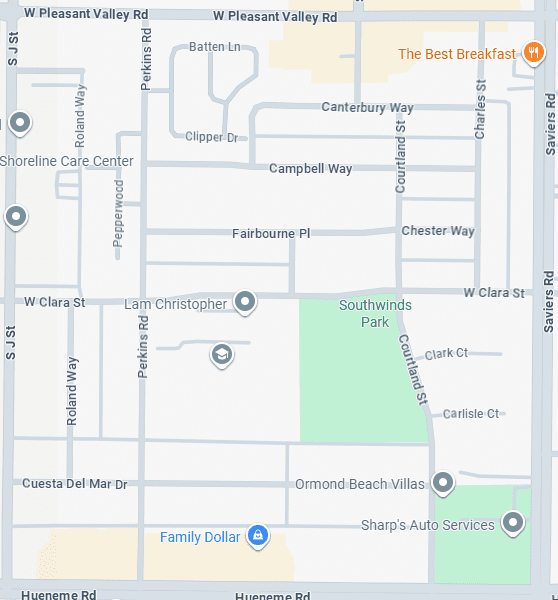
Southside Chiques Crime and Arrests
The Southside Chiques is the second-largest gang in Oxnard, with an estimated 171 members. My analysis of arrest records revealed that these members collectively racked up 3,458 arrests—an average of 20 per person. One Southside Chiques member alone accumulated 76 arrests, clearly illustrating the revolving door of justice that frustrates both police and the community.
Even using a conservative estimate of $1,000 per arrest, the costs of processing Southside Chiques members reached more than $3.4 million. That number doesn’t include the broader financial and emotional toll of crimes committed, court proceedings, probation, and prison housing. To learn more read the blog Gang Related Crime Statistics: Trends and Analysis.
The criminal profile of this gang is equally troubling:
- 73% (124 members) had felony convictions.
- 54% (94 members) had served prison time.
- 25% (43 members) were in state or federal custody during my review in 2019.
- 23% (40 members) were on probation or parole at that time.
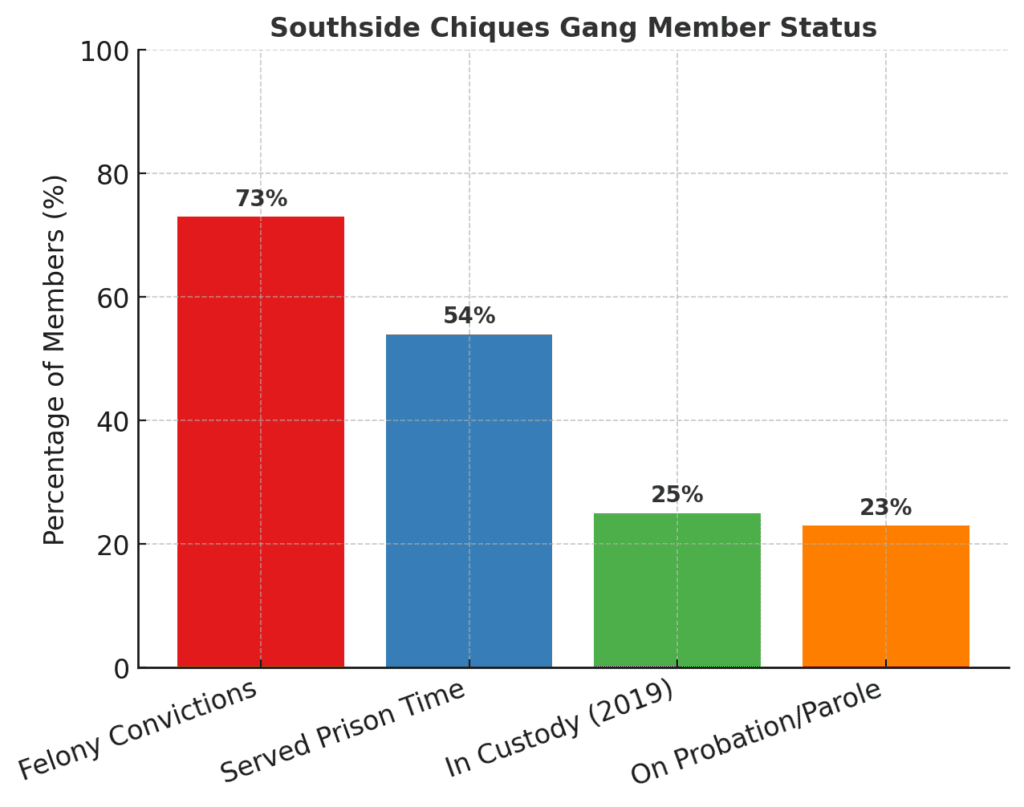
The gang uses the letter “S” as its primary signifier, often stylized after the Chicago White Sox logo. White Sox hats, jerseys, and other merchandise are not simply baseball fandom here—they are uniforms that project dominance, intimidate outsiders, and mark loyalty to the Southside Chiques.
Southside Chiques Gang Injunction
In 2005, the city of Oxnard imposed a gang injunction against the Southside Chiques, following a similar move against the Colonia Chiques gang. This civil legal tool prohibited gang members from gathering, wearing certain clothing, or associating publicly within their claimed neighborhoods. The injunction remained in place until 2020. Critics argued that injunctions unfairly targeted young men of Mexican descent and criminalized everyday behavior. But every law enforcement officers I spoke with—including Mexican/American officers—saw the injunction as an effective tool. It reduced group intimidation, limited visible gatherings, and gave neighborhoods a sense of relief.
The Southside Chiques remain a powerful gang, driven by deep roots in their neighborhoods and emboldened by a culture of repeated arrests with minimal consequences. To learn more read the blog Southside Chiques: A Violent Neighborhood.
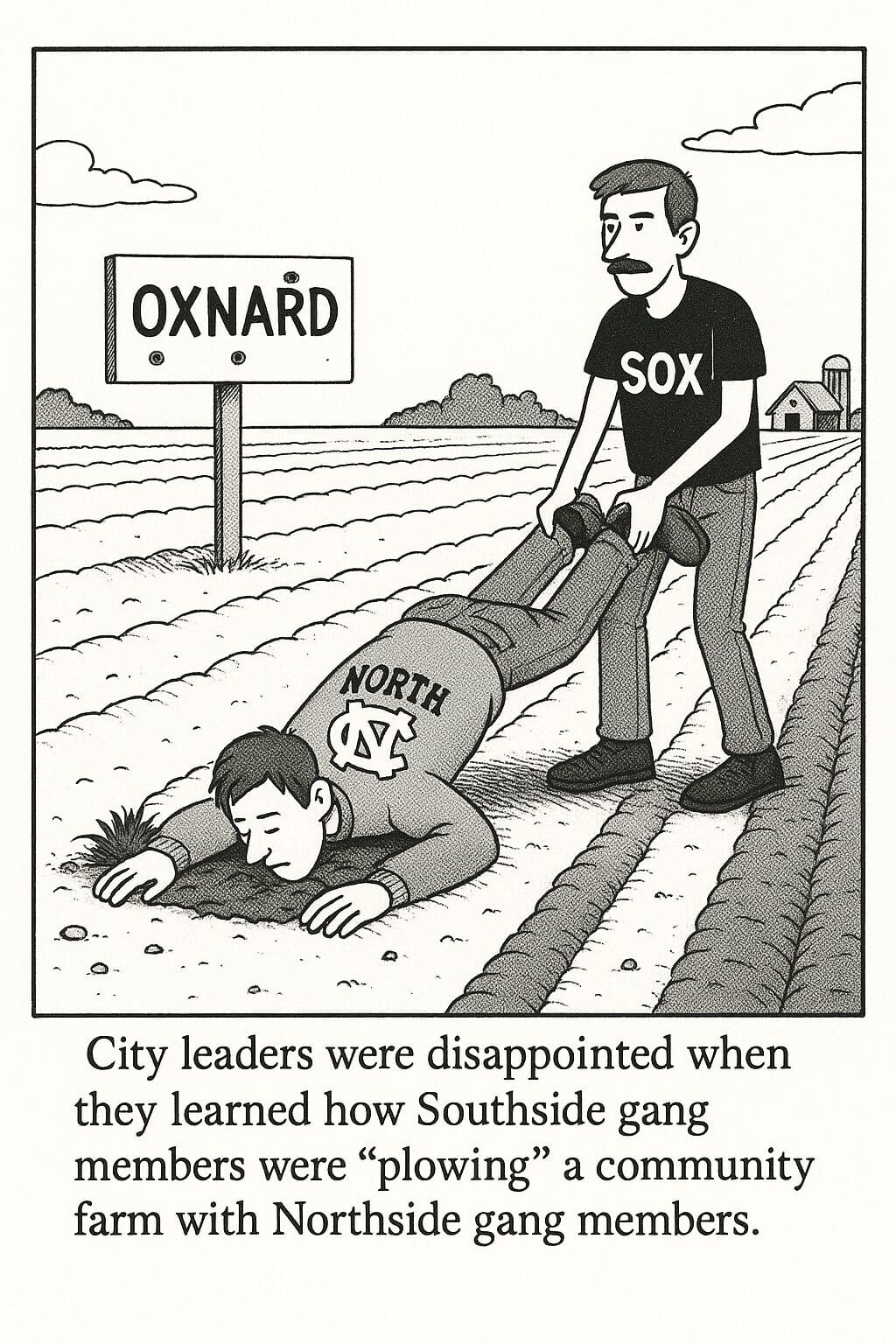
Northside Chiques: Small Numbers, Disproportionate Impact
While the Northside Chiques is much smaller—about 47 documented members—its impact is disproportionate. Members of this gang had been arrested 963 times, an average of 22 arrests per person. Their criminal footprint includes drug trafficking, robbery, murder, witness intimidation, and retaliatory assaults.
Key statistics underscore their persistent criminality:
- 77% (36 members) had felony convictions.
- 20% (9 members) were in state or federal custody.
- 44% (21 members) were on probation or parole.
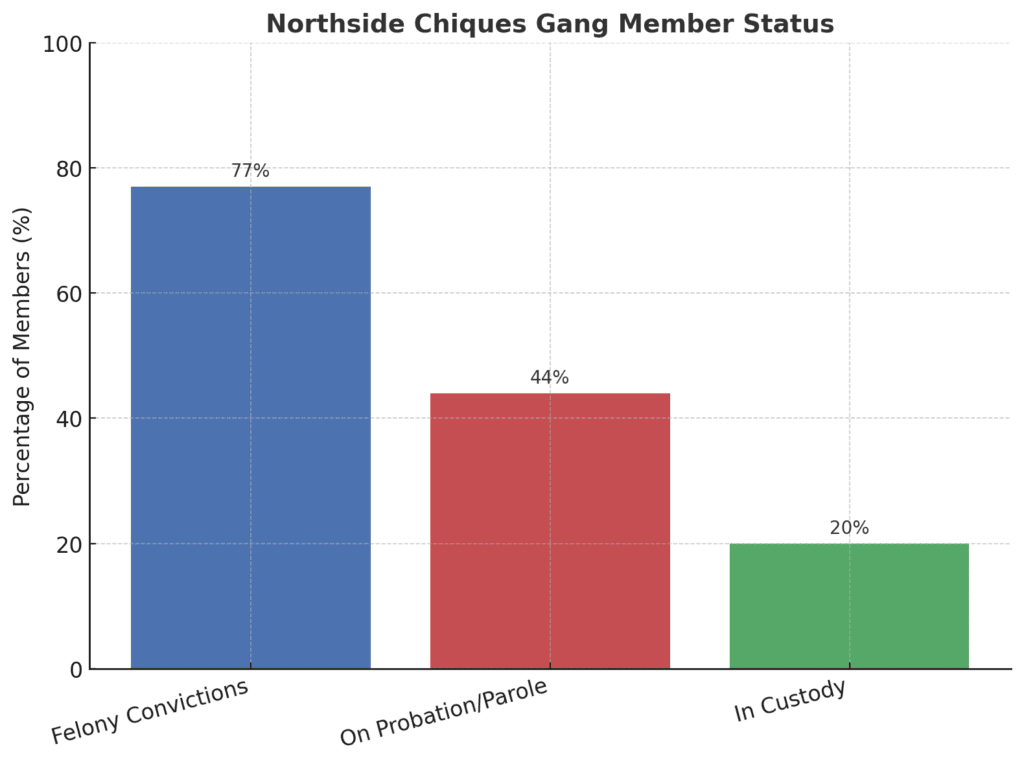
The territory claimed by the Northside Chiques is: South of Gonzales Road, north of Ivywood Drive, east of Ventura Road, and west of H Street. The gang frequents Sierra Linda Park. That wide footprint provides them ample space for drug trafficking, extortion, and intimidation.
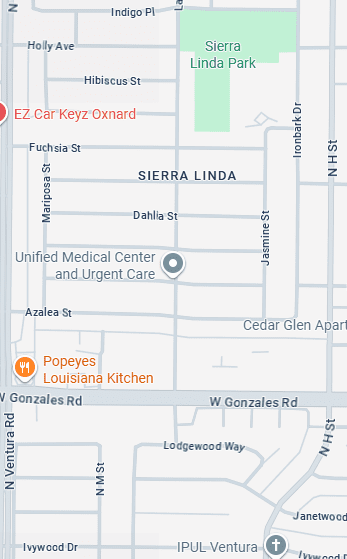
Unlike some gangs whose activities are mostly symbolic or hyper-local, the Northside Chiques operate as part of a larger network. Like other gangs in Oxnard, Northside Chiques is directly influenced by the Mexican Mafia, or La Eme, which controls much of California’s prison system and exerts influence over Hispanic gangs on the street. Their allegiance to La Eme is reinforced in initiation rituals: members are “jumped in” for 13 seconds, a symbolic recognition of the 13th letter of the alphabet, “M,” representing the Mexican Mafia. To learn more read the blog La Eme: Mexican Mafia Control Over California Gangs.
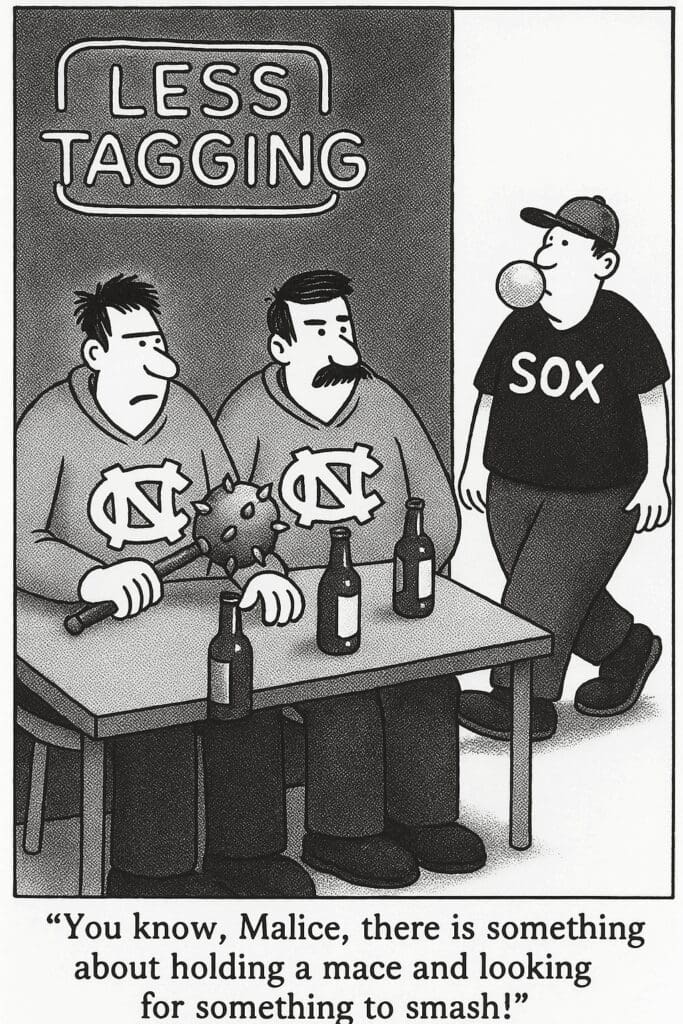
Northside vs Southside gangs in Oxnard: Drugs, Firearms, and Violence
Drug trafficking is the Northside Chiques’ primary source of income. Fentanyl, methamphetamine, and heroin dominate their sales, and non-members must either pay for permission or risk violent retaliation if caught dealing in their neighborhoods. Law enforcement reports detail countless seizures of drugs, firearms, and cash during traffic stops and parole searches.
For example, in October 2018, Oxnard Police stopped a Northside Chiques leader for speeding. He failed a sobriety test, and a search uncovered 73 grams of meth, $2,386 in cash, 15 Xanax pills, 9 grams of heroin, and a loaded .45 caliber Glock handgun. That traffic stop was not unique—it was emblematic of the gang’s involvement in drug sales and their heavy reliance on firearms.
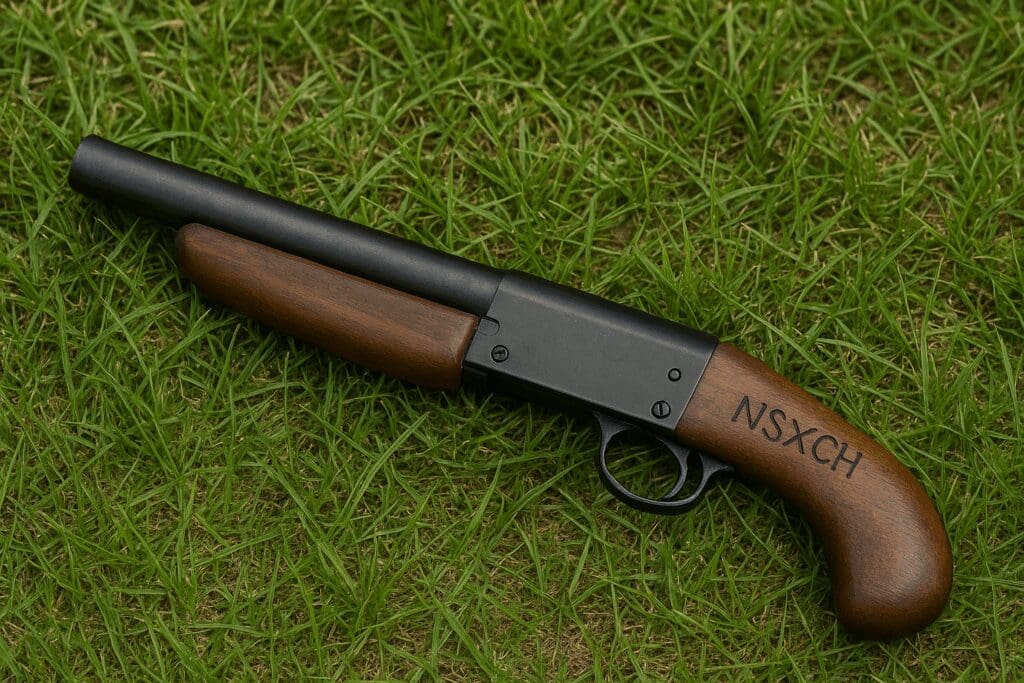
Firearms—often called “hood guns”—are shared between members, circulating through the gang to protect territory and conduct business. Even when a weapon malfunctions, it is kept and passed along as a deterrent or symbol of readiness. Deoxyribonucleic Acid (DNA) analysis frequently ties the same weapon to multiple members, reinforcing the shared ownership culture. To learn more read the blog Gangs and Hood Guns: A Hidden Arsenal on the Streets.
Violence is never far behind. The Northside Chiques, like their Southside rivals, use assaults and murders to maintain control. In one documented case, Northside members stabbed a Southside Chiques member outside a liquor store in Northside territory, after calling him a “lame.” The Southside Chiques gang member refused to cooperate with police.
Symbols and Identity Northside vs Southside gangs in Oxnard
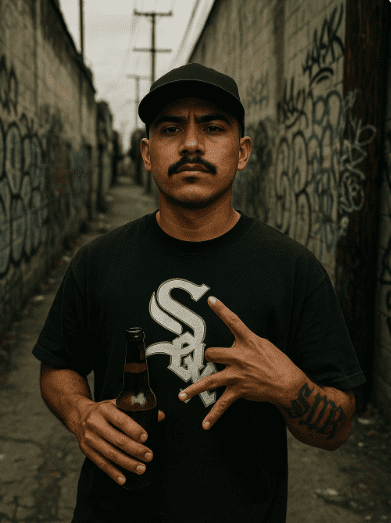
Both Northside vs Southside gangs in Oxnard thrive on symbols of identity. For the Southside Chiques, the Chicago White Sox logo doubles as their calling card. For the Northside Chiques, the University of North Carolina (UNC) logo—with its prominent “NC”—represents “Northside Chiques.” Graffiti reinforces the identity, with tags like NS CH, NSXIIICH, and NSX3CH marking boundaries.
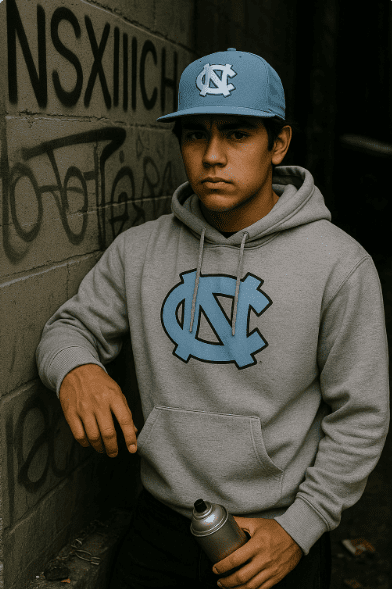
These symbols are not harmless fandom. They are tools of intimidation, used to warn rivals and remind residents that the gang, not the city, controls the neighborhood. Residents quickly learn the meaning: which clothes are safe, which streets to avoid, and which houses are “flop houses” for drug use and sales.
The following is a list of some of the monikers or gang names of Northside and Southside Chiques gang members: Animal, Bones, Capone, Casper, Ceeno, Chops, Creeps, Cricket, Danger, Daffy, Drifter, Fatal, Gangster, Ghost, Goofy, Gunner, Happy, Kaps, Lil Bear, Lil Boxer, Lil Crazy, Loko, Maniac, Mute, Nacho, Neto, Night Owl, Nutty, Psycho, Racoon, Rascal, Reaper, Rowdy, Soldier, Smash, Smokey, Sneaks, Stoney, Tank, Tubs, and Venom. To learn more read the blog Gang Names: Understanding the Criminal Identity System.
One notorious duplex in Oxnard became a battleground when a female Northside associate sold drugs there, deep in Southside territory. At first, confrontations between the gangs were fistfights. Then came shootings. When police arrived, everyone vanished, leaving graffiti-covered walls and destroyed interiors. Before law enforcement could execute a search warrant, gang members set the duplex on fire. The message was clear: territory disputes would be settled with destruction.
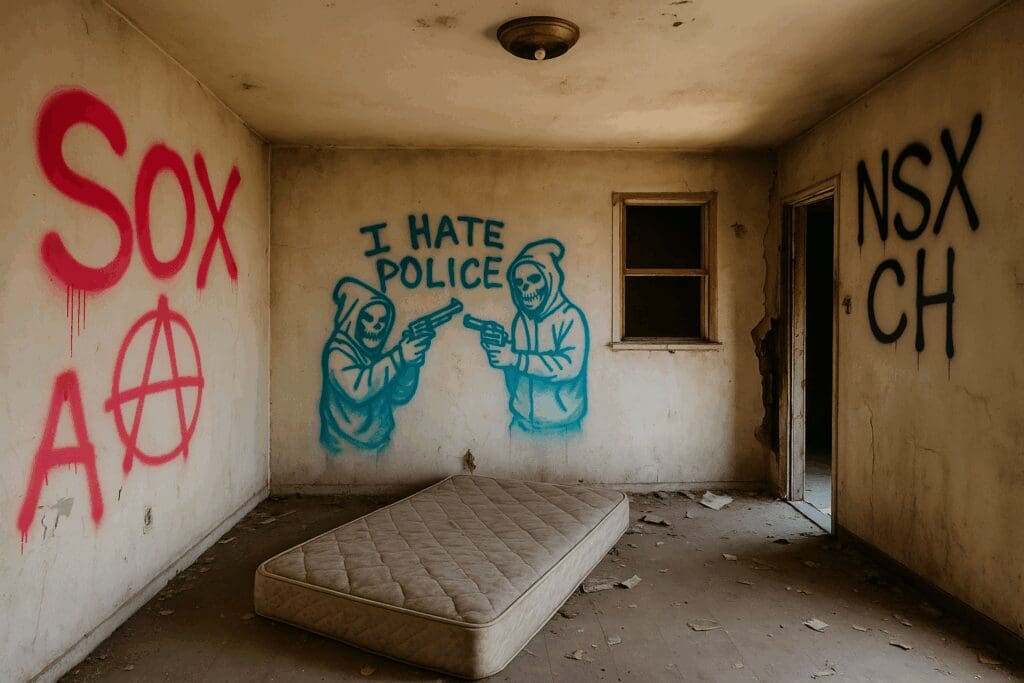
Northside vs Southside gangs in Oxnard: Neighborhood Divide
More gang member equals lower home prices. Beyond crime statistics and gang injunctions, the divide between North Oxnard and South Oxnard is visible in the daily lives of residents. North Oxnard with a gang a fraction the size of South Oxnard is generally safer, with lower crime rates and higher home values. In August 2025, the median home price in North Oxnard was $775,000, compared to $650,000 in South Oxnard.
The Southside neighborhoods, long plagued by gang activity, have borne the brunt of shootings, drug houses, and open intimidation. In contrast, North Oxnard’s relative safety has made it more desirable for families, driving up property values and reinforcing socioeconomic divides. Families with resources move north, while those left in the south struggle under the weight of gang culture, poverty, and intimidation. Northside vs Southside gangs in Oxnard clearly lower living standards in the city.
Conclusion: A Cycle That Continues
The story of the Northside vs Southside gangs in Oxnard is one of cycles: arrests without deterrence, territory wars without resolution, and neighborhoods caught in the middle. Both gangs project their presence through graffiti, clothing, and intimidation, but their real legacy is the human and economic cost left behind.
Northside and Southside Chiques members have been arrested thousands of times, costing millions of dollars in taxpayer resources. Together, they have carved lasting scars into Oxnard’s communities.
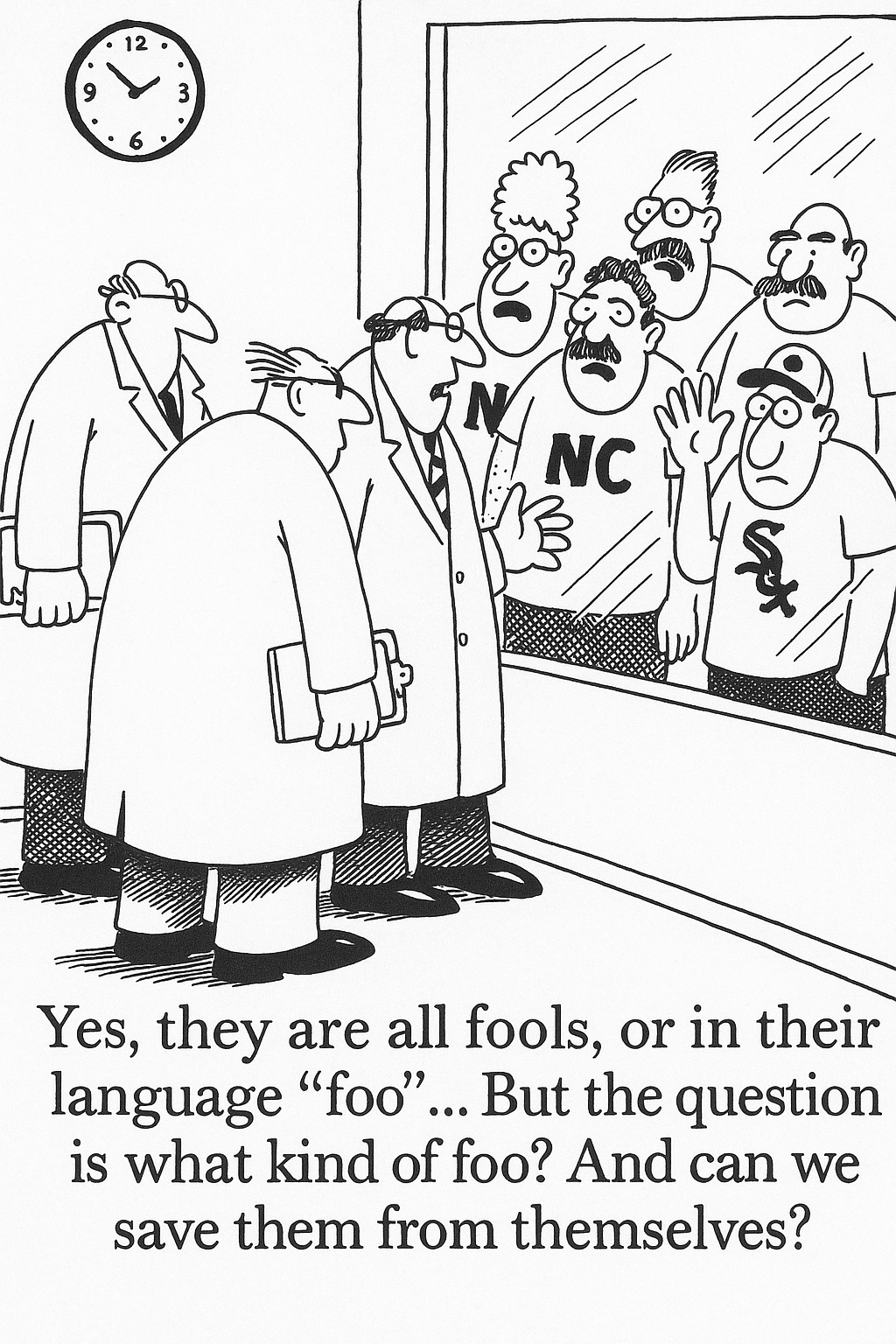
Despite gang injunctions, arrests, and prison sentences, the North vs South divide persists. It is reflected not only in crime statistics but in the home prices, safety, and daily experiences of Oxnard residents. Until the city council and community members find a way to address the consequences of gang culture, this story will remain unfinished—and Oxnard’s neighborhoods will continue to live with the shadow of gangs.
To learn more about the Northside and Southside Chiques get the book Less Tagging More Killing.
